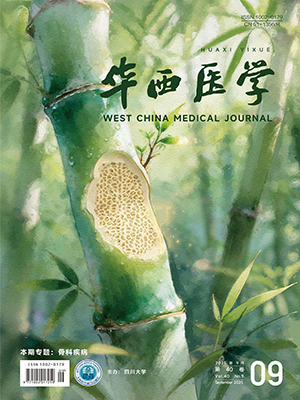| 1. |
WHO Regional Office for the Americas. Depression and other common mental disorders. Geneva: WHO Regional Office for the Americas, 2017.
|
| 2. |
World Federation for Mental Health. DEPRESSION: a global crisis. World Mental Health Day, October 10 2012. Occoquan, VA: World Federation for Mental Health, 2012.
|
| 3. |
Smith K. Mental health: a world of depression. Nature, 2014, 515(7526): 181.
|
| 4. |
Wooller SK, Benstead-Hume G, Chen X, et al. Bioinformatics in translational drug discovery. Biosci Rep, 2017, 37(4): BSR20160180.
|
| 5. |
高瑜, 陈图农, 徐成, 等. 美国《精神障碍诊断与统计手册》第 5 版人格特质的稳定性和变化性研究. 临床精神医学杂志, 2021, 31(1): 42-46.
|
| 6. |
Chin CH, Chen SH, Wu HH, et al. cytoHubba: identifying hub objects and sub-networks from complex interactome. BMC Syst Biol, 2014, 8(Suppl 4): S11.
|
| 7. |
Wu T, Hu E, Xu S, et al. clusterProfiler 4.0: a universal enrichment tool for interpreting omics data. Innovation (Camb), 2021, 2(3): 100141.
|
| 8. |
Gao Y, Kim S, Lee YI, et al. Cellular stress-modulating drugs can potentially be identified by in silico screening with connectivity map (CMap). Int J Mol Sci, 2019, 20(22): E5601.
|
| 9. |
Han T, Zhou Y, Li D. Relationship between hepatocellular carcinoma and depression via online database analysis. Bioengineered, 2021, 12(1): 1689-1697.
|
| 10. |
Lisowski P, Wieczorek M, Goscik J, et al. Effects of chronic stress on prefrontal cortex transcriptome in mice displaying different genetic backgrounds. J Mol Neurosci, 2013, 50(1): 33-57.
|
| 11. |
Satyanarayanan SK, Su H, Lin YW, et al. Circadian rhythm and melatonin in the treatment of depression. Curr Pharm Des, 2018, 24(22): 2549-2555.
|
| 12. |
Varinthra P, Liu IY. Molecular basis for the association between depression and circadian rhythm. Tzu Chi Med J, 2019, 31(2): 67-72.
|
| 13. |
Ma WN, Zhou MM, Gou XJ, et al. Urinary metabolomic study of chlorogenic acid in a rat model of chronic sleep deprivation using gas chromatography-mass spectrometry. Int J Genomics, 2018, 2018: 1361402.
|
| 14. |
Zhao S, Chi A, Yan J, et al. Feature of heart rate variability and metabolic mechanism in female college students with depression. Biomed Res Int, 2020, 2020: 5246350.
|
| 15. |
Zeng P, Wang XM, Ye CY, et al. Mechanistic insights into the anti-depressant effect of emodin: an integrated systems pharmacology study and experimental validation. Aging (Albany NY), 2021, 13(11): 15078-15099.
|
| 16. |
Wang Y, Jiang H, Meng H, et al. Antidepressant mechanism research of acupuncture: insights from a genome-wide transcriptome analysis of frontal cortex in rats with chronic restraint stress. Evid Based Complement Alternat Med, 2017, 2017: 1676808.
|
| 17. |
Watanabe Y, Nunokawa A, Kaneko N, et al. Two-stage case-control association study of polymorphisms in rheumatoid arthritis susceptibility genes with schizophrenia. J Hum Genet, 2009, 54(1): 62-65.
|
| 18. |
Hamid HA, Ramli AN, Yusoff MM. Indole alkaloids from plants as potential leads for antidepressant drugs: a mini review. Front Pharmacol, 2017, 8: 96.
|
| 19. |
Jawna-Zboińska K, Blecharz-Klin K, Joniec-Maciejak I, et al. Passiflora incarnata L. improves spatial memory, reduces stress, and affects neurotransmission in rats. Phytother Res, 2016, 30(5): 781-789.
|
| 20. |
Castellvi P, Navinés R, Gutierrez F, et al. Pegylated interferon and ribavirin-induced depression in chronic hepatitis C: role of personality. J Clin Psychiatry, 2009, 70(6): 817-828.
|




